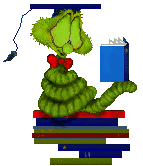|
"No one illustration is enough to create stereotypes
in children's minds. But enough books contain these images - and the general culture reinforces them - so that
there is a cumulative effect, encouraging false and negative perceptions about Native Americans."
From "Unlearning "Indian Stereotypes: Council on Interracial Books for children 1841 Broadway, New York,
NY 10023.
1. Look at the Illustrations
- Do they show all Native people looking alike?
- Are animals used to represent Indian people? this denies the humanness of Native people
and suggests that one "becomes" Indian simply by putting on a " costume" of leather and feathers.
- Do children "dress up like Indians" or "play Indians" as if Indian
were a role that one could assume like doctors or cowboys?
- Do Native Americans appear in alphabet and counting books as objects that are counted;
as " 'I' for Indian"?
- Do the illustrations show Native people threatening non-Native people, particularly
people portrayed as "helpless"? (e.g., Peter Pan, Little House on the Prairie, Indian in the Cupboard)
- Do they show Native people in a variety of occupations and historical time periods
(not just in conflict with Europeans, for example.)
- Are Native and non-Native people interacting? Haw are the non-Native people near the
Native Americans reacting toward them? Afraid? Scornful? Putting up with them?
- Are the clothing styles, homes, etc. accurate for the specific culture portrayed?
There is enormous diversity in the traditional clothes and homes of different Native people; and Indians today
are contemporary, as well, often seen (but seldom depicted) in modern clothes and settings.
- Is the artwork dominated by "generic Indian" designs? Has the illustrator
taken care to reflect the traditions and symbols of the particular people in the book. (For example, are totem
poles, sitting beside tipis with canoes alongside?)
- Is the illustrator Native American? Is the specific identification the nation/tribe
of Native people represented?
2. Look at the Vocabulary.
- Does the vocabulary suggest that Native people have ceased to exist, that they lived
only "long ago", that they are "frozen" in the historic past? Are Native people discussed in
the past tense only? Is the time the story takes place clear?
- Is the vocabulary demeaning? Does it include words like "squaw", "brave",
or "papoose" instead of woman, man, and baby? Are stereotypes reinforced by using words or phrases like
"sneaking", "lurking", "Indian file", or "Indian style"?
- Are the words "savage", "primitive", or "uncivilized"
used when talking about Indian cultures at the time of European arrival or before? Is respect shown for the cultural
diversity of Native cultures rather than being depicted as simplistic or inferior?
- Do Native people speak in either "old westerns/Tonto" speech or the oratorical
style of the "noble savage"? (For example, The Indian in the Cupboard) Or do they use language with the
articulate skill of a people who came from an oral tradition?
- Do Native characters have ridiculous imitation "Indian" names, such as "Little
Chief" or "Indian Two Feet"?
- Is the language loaded when presenting Indian/European contact and subsequent conflict?
Are Native victories called "massacres", while the words "battle" or "victory" describes
the non-Native's side of the conflict?
3. Look at the Story.
- Has the book been reviewed by a Native person or someone knowledgeable about Native
peoples as well as the subject of the book?
- Is the author or publisher Native American? If the book is a retelling of a traditional
Native story, is the specific Native source identified? Is there an author's note explaining the appropriateness
or permission for his/her telling of the story? (For example, a volume of "American Indian" or "Native
American" stories, with no mention of nation or tribe makes our diverse cultures one-dimensional and generic)
- Are Native people associated mostly with violence? Are Native people located primarily
on remote reservations? Are reasons given for either conflict or reservations? Are urban, rural, or suburban Native
people presented at all?
- Are Native women portrayed as passive or working "drudges"? Are they portrayed
as having an important role in the culture?
- Is the image of the Native people portrayed with human strengths and weaknesses, responding
to his/her own nature and his/her own time and circumstances?
- Are Native heroes only the people who, in some way are believed to have aided Europeans
in the conquest of Native people and this continent? (For example, Pocahantas, Squanto, Sacajawea) Are Native heroes
those who are admired because of what they did for their own people?
- Does the book lead to a deeper understanding and appreciation of Native peoples, yesterday
and today?
- Are traditional stories treated with the respect given to other cultures/religions'
teaching stories or parables, or are they trivialized as superstitious "myths" or "legends"
only suited for small children?
- Would a Native reader be proud of this book and his/her heritage? Is there anything
in the story that would embarrass or hurt a Native child?
- How can this book best be used in a school curriculum to enhance a variety of themes,
not only "Native studies"?

The above article was written by Dovie Thomason and presented first to the public in
the Central Virginia Area in an issue of "Monacan News" in 1997 where it was reproduced with the intent
to distribute as far and wide as possible to promote understanding about Indian people.
For an excellent site that has a recommended reading list (and a books
to avoid list, too) visit:
Oyate
http://www.oyate.org/main.html
|

